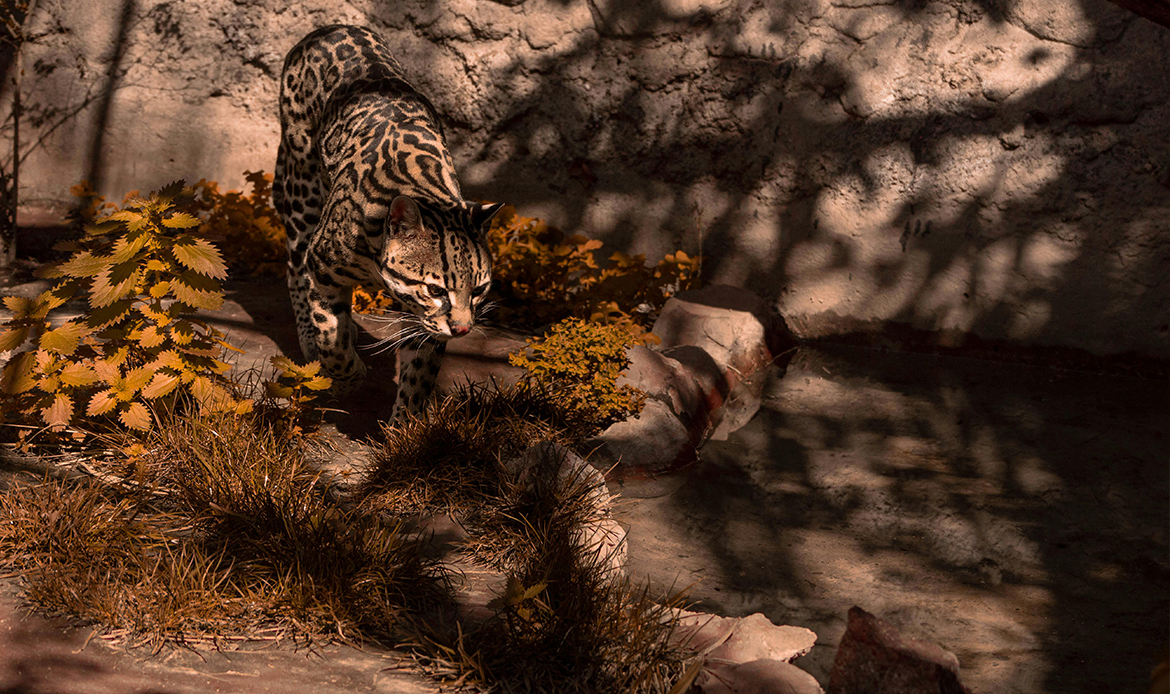
Whiskers and Wonders: The Journey of the Endangered Ocelot
Deep within the lush rainforests and dense thickets of the Americas, there exists a creature of mystique and allure: the ocelot. This wild cat, known for its striking coat and elusive nature, is not just a marvel of evolution but also a species teetering on the brink of endangerment. Join us as we delve into the world of the ocelot, exploring its habits, habitats, and the conservation efforts aimed at preserving this remarkable feline.
Table of Contents
The Elusive Ocelot: A Profile
The ocelot (Leopardus pardalis) is a medium-sized wild cat native to the Southwestern United States, Mexico, Central America, and South America. With a coat that blends shades of tawny, black, and white, the ocelot is often mistaken for a small jaguar or leopard. Its distinctive rosettes and stripes provide excellent camouflage in its natural habitat, making it a master of stealth.
Ocelots are primarily nocturnal, spending their days resting in dense vegetation and becoming active at dusk. They are solitary creatures, preferring to hunt alone. Their diet consists mainly of small mammals, birds, reptiles, and even fish, showcasing their adaptability and versatility.
Habitat and Distribution
Ocelots thrive in a variety of environments, including tropical rainforests, mangrove forests, and savannas. However, their preferred habitat is dense, tropical forest with plenty of cover. This preference has led to significant habitat loss due to deforestation and agricultural expansion, further endangering the ocelot.
In the United States, ocelots are primarily found in the dense thorn scrub of South Texas. The Laguna Atascosa National Wildlife Refuge and the surrounding areas are crucial strongholds for the remaining ocelot population in the country.
Threats to the Ocelot
The ocelot faces numerous threats that have contributed to its declining numbers. Habitat destruction is the most significant factor, as deforestation for agriculture, livestock grazing, and urban development encroaches on their natural territories. Additionally, ocelots are often victims of roadkill, especially in areas where their habitat is fragmented by highways.
Poaching and the illegal wildlife trade also pose substantial threats. The ocelot’s beautiful fur has long been a target for hunters, despite international laws protecting the species. Disease and genetic isolation, resulting from habitat fragmentation, further exacerbate the challenges faced by these magnificent cats.
Conservation Efforts
Conservation efforts for the ocelot are multifaceted and involve various organizations and initiatives. The U.S. Fish and Wildlife Service, along with local and international conservation groups, plays a pivotal role in protecting ocelot habitats and promoting their recovery.
Habitat Preservation
One of the key strategies in ocelot conservation is habitat preservation. Protecting and restoring critical habitats, such as the thorn scrub in South Texas, is essential for the species’ survival. Conservationists work to acquire and manage land, ensuring that ocelots have sufficient space to thrive.

Roadkill Prevention
To mitigate the risk of roadkill, wildlife crossings and underpasses are being constructed in areas with high ocelot activity. These structures allow ocelots to safely traverse highways, reducing mortality rates and promoting genetic exchange between isolated populations.
Public Awareness and Education
Raising public awareness about the plight of the ocelot is crucial for garnering support for conservation efforts. Educational programs and campaigns aim to inform people about the importance of protecting ocelots and their habitats. Community involvement and cooperation are vital for the success of these initiatives.
Research and Monitoring
Ongoing research and monitoring are essential for understanding the ocelot’s ecology and population dynamics. Scientists use camera traps, radio collars, and genetic analysis to track ocelot movements, assess population health, and identify critical habitats. This information guides conservation strategies and informs policy decisions.
The Future of the Ocelot
The journey of the ocelot is one of resilience and adaptation, but it is also a tale of urgent need for conservation. With continued efforts to protect their habitats, reduce threats, and promote public awareness, there is hope for the recovery of this enigmatic feline.
Each of us has a role to play in ensuring the survival of the ocelot. By supporting conservation organizations, advocating for habitat protection, and spreading awareness, we can contribute to the preservation of this remarkable species. The ocelot’s future is in our hands, and together, we can ensure that these whiskered wonders continue to grace the wild landscapes of the Americas.
Conclusion
The ocelot is a symbol of the delicate balance between nature and human activity. Its journey from abundance to endangerment serves as a reminder of our responsibility to protect and preserve the natural world. Through collective effort and dedication, we can secure a brighter future for the ocelot and the diverse ecosystems it calls home.
